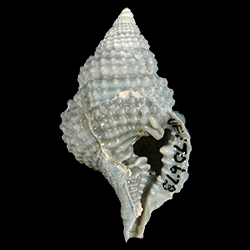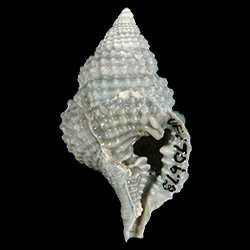
Personidae

- Phylum: Mollusca
- Class: Gastropoda
- Order: Littorinimorpha
- Family: Personidae
Overview
Key morphological features: The Personidae are small to large sized gastropods with robust, moderately high-spired shells that feature conspicuously distorted coiling patterns. The degree of irregular coiling varies between species, but is caused by the need for new shell growth to accommodate old shell structures (varices and parietal shields) that are not remodeled as the animal grows. The shell exterior features axial ribs crossed by spiral cords, producing a beaded or cancellated appearance, and prominent varices occur at roughly 270-degree intervals. The aperture is irregularly shaped and constricted by one or more projecting teeth that flank both the labral and columellar sides of the aperture. An anal canal is present, as is a prominent siphonal canal, and the ventral portion of the body whorl has a thin but prominent parietal callus. Source: Tunnell Jr., J.W., Andrews, J., Barrera, N.C., Moretzsohn, F. 2010. Encyclopedia of Texas Seashells. College Station: Texas A&M University Press. 512 pp.; Kronenberg, G.C. 1994. A review of the Personidae Gray, 1854, with the description of Distorsio ventricosa spec. nov. Vita Marina 42 (3): 57-103.
Geological range: Upper Cretaceous to Recent (Davies, 1971).
Geographic distribution: A distributional map for modern Personidae may be accessed from OBIS. A distributional map for ancient Personidae may be accessed from the Paleobiology Database.
Diversity: There are 26 recognized living species of Personidae and 4 genera (WoRMS database, unvetted). The Paleobiology Database recognizes 6 fossil genera and 32 fossil species of Personidae (unvetted).
Paleoecology: Relatively little is known about the ecology of the Personidae, but they are predatory marine gastropods. They can be found on both soft and hard substrates at depths ranging from low intertidal to ~500m and subtropical to tropical latitudes. Source: Tunnell et al. (2010); Kronenberg (1994).
Phylogenetic status: Unknown.
